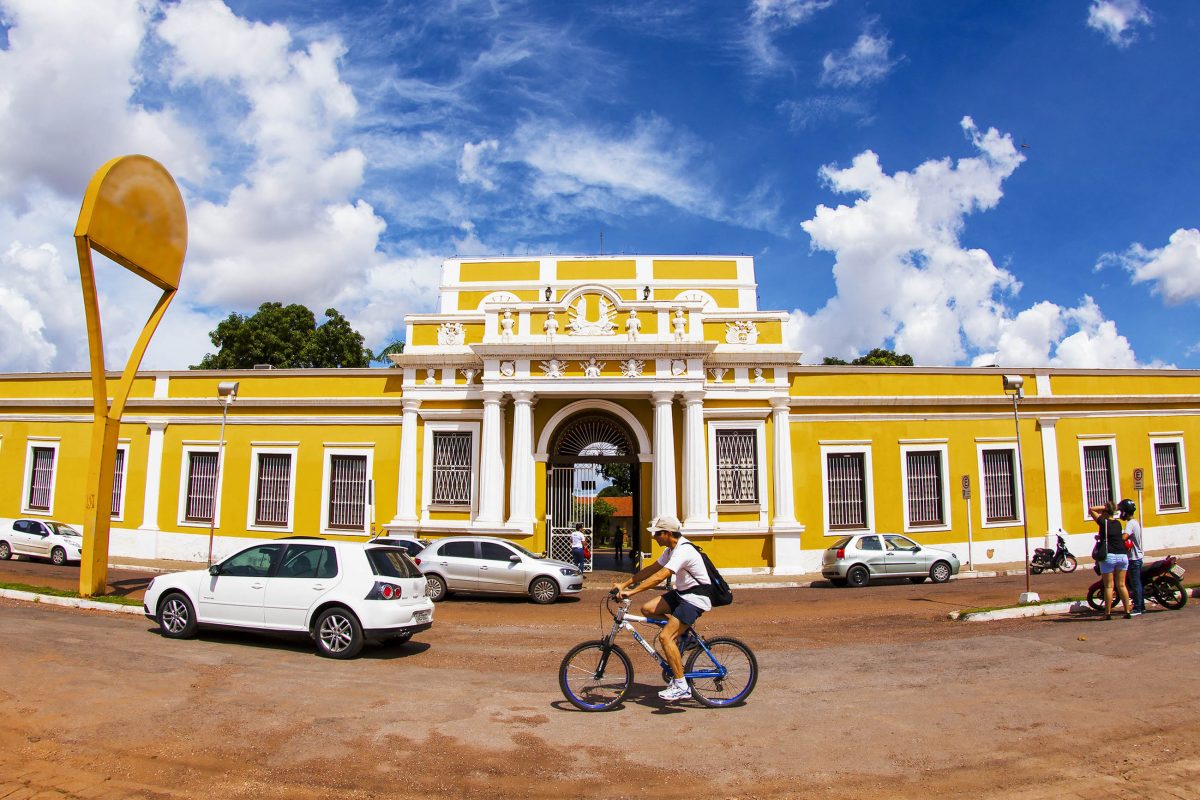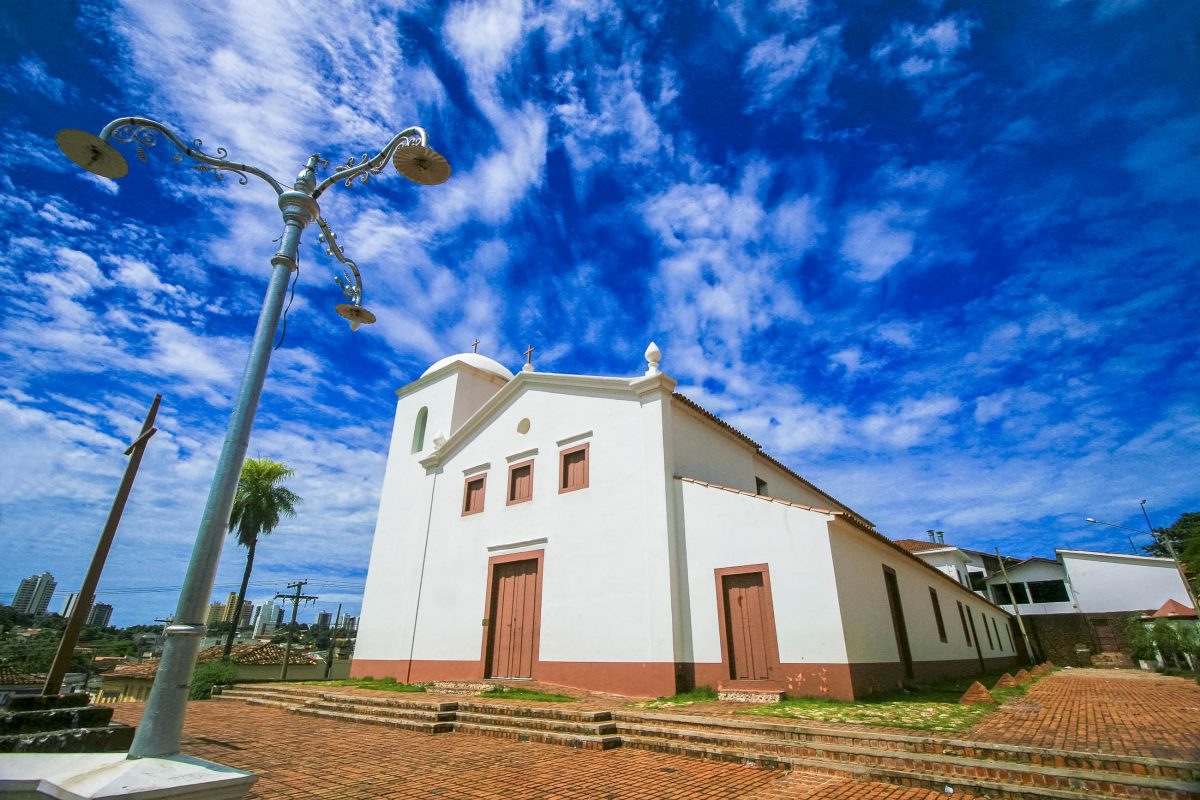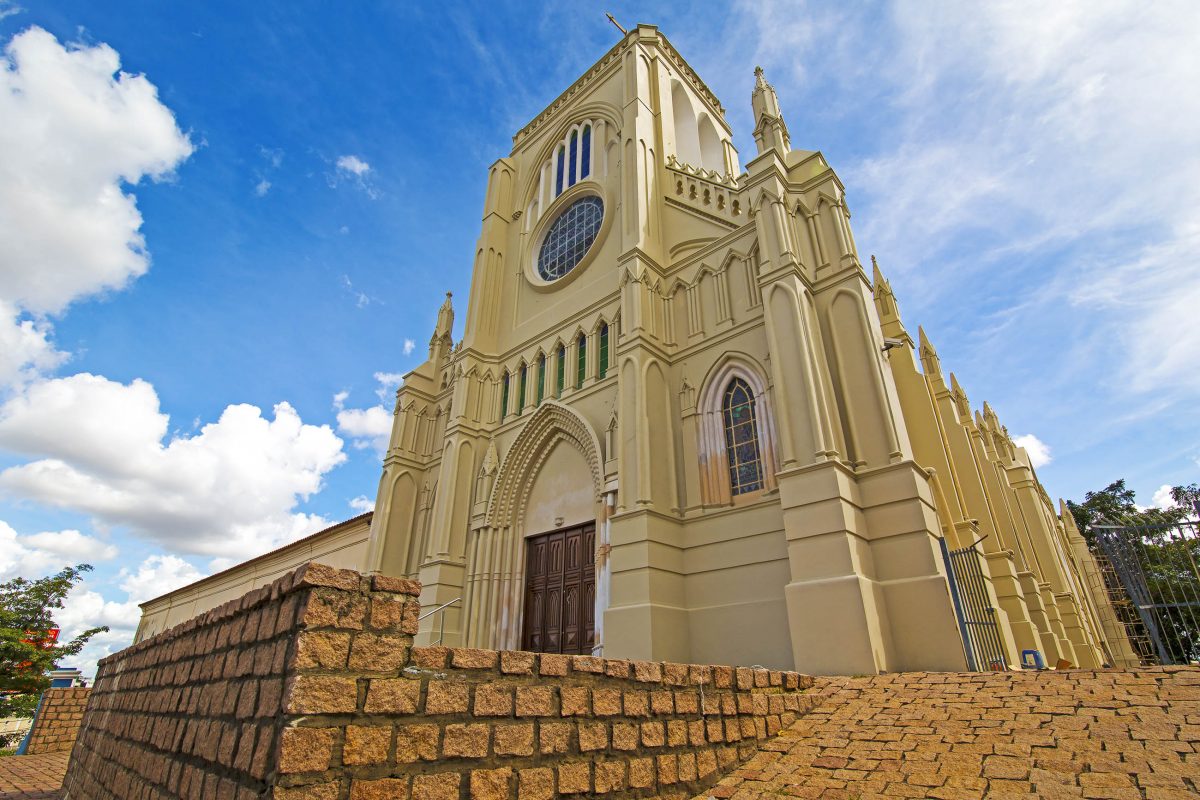Cuiabá, die Hauptstadt von Mato Grosso in Brasilien, gilt als Tor zum Naturparadies Pantanal. Von Touristen oft verschmäht bietet seine Innenstadt zahlreiche Museen, eindrucksvolle Kirchen und einen quirligen Fischmarkt.
Die brasilianische Stadt Cuiabá liegt im Westen von Brasilien und ist seit 1835 Hauptstadt des Bundesstaates Mato Grosso. Sie rühmt sich als geografisches Zentrum Südamerikas und war einer der Austragungsorte der Fußball-Weltmeisterschaft 2014.
Inhaltsverzeichnis
Entstehung von Cuiabá
Cuiabá wurde 1719 am gleichnamigen Fluss Rio Cuiabá von den so genannten „Bandeirantes“ gegründet, die in der Gegend Gold gefunden haben. Der Name wurde vom indianischen Ausdruck „Ikuiapá“ abgeleitet, was soviel wie „Ort der Harpune“ bedeutet. Durch die Goldfunde konnte Cuiabá rege Zuwanderung verbuchen, darunter viele Araber, die der Stadt mit ihren Geschäftslokalen und Moscheen einen Stempel aufdrückten.
Das Schwemmland um Cuiabá wird nach wie vor mit altmodischen Methoden auf der Suche nach dem begehrten Edelmetall umgepflügt. Die Goldfunde sind jedoch nicht mehr gewinnbringend und so lebt Cuiabá heute hauptsächlich von Rinderzucht und Landwirtschaft.
Klima und beste Reisezeit für Cuiabá
In Cuiabá ist es das ganze Jahr über heiß und feucht. Die Temperaturen klettern bis auf 43°C und fallen selten unter 15°C. Im brasilianischen Sommer, von Dezember bis März, ist noch dazu mit drückender Schwüle und wolkenbruchartigen Niederschlägen zu rechnen. Am besten besucht man Cuiabá von Juni bis Oktober.
Sehenswürdigkeiten in Cuiabá

Besucher werden vor allem von der unberührten Naturlandschaft in der Umgebung Cuiabás angezogen. Da die meisten Touristen der Innenstadt nur einen kurzen Blick widmen, bevor es weiter in die Umgebung geht, ist das Herz Cuiabás noch großteils touristisch unberührt.
Wer sich umsieht, findet in Cuiabá mitreißende Live-Musik, Stiefel, Hüte und Sättel echter Cowboys, ausgezeichnete Gerichte aus aller Welt und grandiose Drinks aus der allgegenwärtigen Kokosmilch. Die Attraktionen Cuiabás sind vom Stadtzentrum aus alle zu Fuß zu erreichen.
Praça da República
Das Zentrum von Cuiabá stellt der Praça da República dar, der von einer Kathedrale aus dem Jahr 1968, dem Postamt, der Touristeninformation und dem sonnengelben barocken Palácio da Instução gesäumt wird.
In letzterem ist ein Museum für Naturgeschichte, Anthropologie und Geschichte untergebracht. Dieses präsentiert eine umfangreiche Sammlung von Exponaten über Brasiliens Ureinwohner, historische Dokumente über das Wirken von Cândido Rondon und informiert über den Krieg zwischen Brasilien und Paraguay in den 1960er-Jahren.
Im Nordosten des Praça da República beginnt in der Rua Galdino Pimentel das kleine Altstadtzentrum mit historischen Bauten aus dem 19. Jahrhundert. An der Avenido Getulio Vargas, die ebenfalls vom Praça da República wegführt, sind die besten Hotels und Restaurants der Stadt zu finden.
Igreja de Nossa Senhora do Rosário e São Benedito

Gleich am Ende der Pimentel liegt der Praça do Rosário, an dem die schneeweiße Igreja de Nossa Senhora do Rosário e São Benedito zu finden ist. Auch als Rosário-Kirche bekannt markierte sie einst eine reiche Goldader und ist das älteste Gotteshaus von Ciuabá.
Sie wurde 1722 von Sklaven im „Estilo Barroco de Cuiabá“ („Barockstil von Cuiabá“) errichtet und bietet heute mit der „Festa de São Benedito“ die größte religiöse Manifestation der Stadt. Ihr Innenraum ist mit kostbarem goldenen Altar und wunderschönen Ikonographien ausgestattet.
Mercado de Peixe
Der Fischmarkt von Cuiabá ist eine besondere Sehenswürdigkeit der Stadt. Er befindet sich an der Brücke über den Rio Cuiabá und sein Besuch ist immer ein Erlebnis. Hier kann die Seele der Stadt erfasst werden, außerdem ist es erstaunliche welche Prachtexemplare aus den Flüssen des Pantanal gezogen werden. Die Fische können übrigens im angrenzenden Aquário Municipal auch lebendig besichtigt werden.
Cidade Universitária
Die städtische Universität von Cuiabá liegt etwa 4km vom Stadtzentrum entfernt inmitten einer wunderschönen Parkanlage. Das zugehörige Museu Marechal Rondon lockt mit einer überraschend guten Sammlung über Brasiliens Ureinwohner.
Museu Rondon
Wer sich für Brasiliens Ureinwohner interessiert, ist im Museu Rondon richtig. Das Museum wurde im Jahr 1972 gegründet und ist das Zentrum der Forschung und Verbreitung von indigenen Kulturen in Mato Grosso. Unter den etwa tausend Ausstellungsstücken befinden sich Kostüme, Waffen, Federschmuck, Keramiken, Musikinstrumente, Stoffe, Geschirr und rituelle Artefakte von Brasiliens Ureinwohner.
1909 vermaß der brasilianische Offizier und Entdecker Cândido Rondon auf einer Expedition das geografische Zentrum Südamerikas. Die zugehörige Markierung ist heute auf dem Praça Moreira Cabral zu sehen, der südöstlich vom Praça da República an der Rua Barão de Melgaço liegt.
Catedral Metropolitana Basílica do Senhor Bom Jesus
Die Kathedrale ist Sitz der Erzdiözese von Cuiaba und hat eine bewegte Geschichte hinter sich. Die ursprüngliche Kirche wurde bereits im Jahr 1722 aus Holz und Lehm errichtet. Mitte des 19. Jahrhunderts wurde die Fassade modifiziert und in den 1920er-Jahren ein neuer Turm errichtet. 1968, im Zuge der Modernisierung von Cuiabá, wurde die alte Lehmkirche abgerissen, was von der Bevölkerung sehr bedauert wurde.
Die heutige Kathedrale, ein imposanter Bau aus Beton mit zwei rechteckigen Türmen und riesigen Buntglasfenstern, stammt aus dem Jahr 1973 und wurde ein Jahr nach ihrer Vollendung in den Status einer Basilika minor erhoben.
Igreja de Nossa Senhora do Bom Despacho

Die prachtvolle Kathedrale wurde nach dem Vorbild der Nôtre Dame in Paris im Jahr 1918 erbaut. Seit dem Jahr 2004 überblickt sie Ciuabá von ihrem Hügel aus frisch renoviert. Gleich neben der Kirche befindet sich ein Museum für sakrale Kunst.
Ausflüge von Cuiabá
Die wenigsten Touristen kommen wegen der Stadt selbst nach Cuiabá. Die Stadt gilt als Tor zum Pantanal, einem der größten Sumpfgebiete der Welt.
Auch die Chapada dos Guimarães liegt nur 60 Kilometer weiter nördlich. Dies ist eine eindrucksvolle, von Flüssen und Bächen durchzogene Hochebene mit imposanten rostroten Sandsteinformationen, rauschenden Wasserfällen, natürlichen Pools und einer faszinierenden Vogelwelt.
Weiterführende Links:





